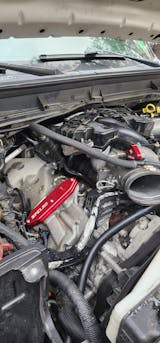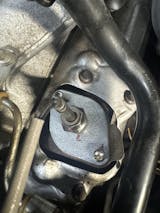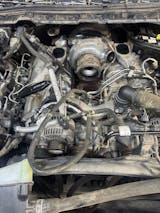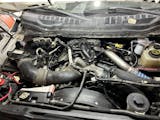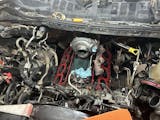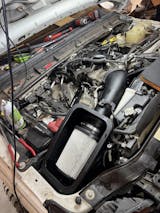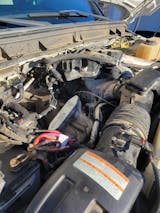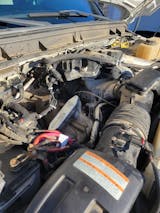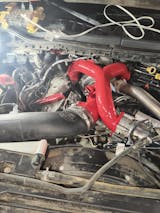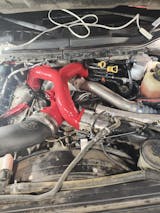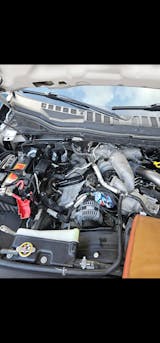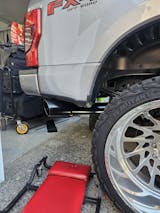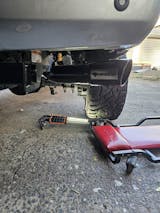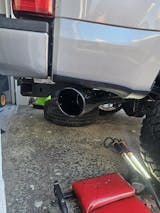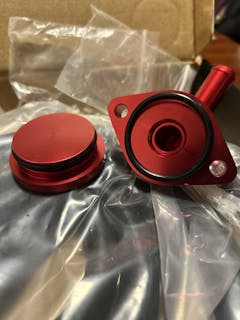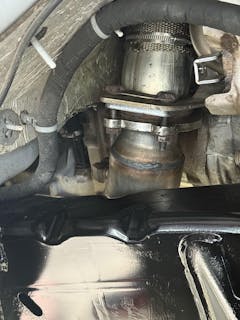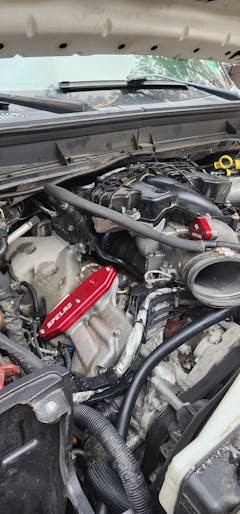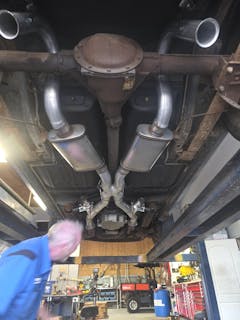What Is an EGR Delete Kit, and Why Use It?
An EGR delete kit is designed to fully eliminate the Exhaust Gas Recirculation system from your 6.7L Powerstroke. The SPELAB egr delete kit 2012 6.7 powerstroke reroutes coolant flow, blocks off EGR valves and ports, and removes exhaust recirculation—resulting in a cleaner, cooler, and more efficient engine.
What Are The Benefits of EGR Delete?
An EGR delete can bring about several benefits. These include:
1. Improved Fuel Economy and Engine Longevity
An EGR delete helps you restore your diesel engine’s power levels which, in turn, also restores your overall fuel efficiency. Since an EGR delete kit sends the exhaust gas away from your car’s engine, it starts to run cleaner, too. Not only does it make the process increasingly efficient, but it also reduces the chances of DPF (diesel particulate filter) failure. So, with this aftermarket kit, you can see an increase of up to 20% in your fuel economy. Along with that, the EGR delete kit can also improve your engine’s longevity.
2. Reduced Engine Temperature
EGR valves naturally contain a high content of soot. When the EGR system’s valve or coolers get clogged with soot, the exhaust gases circulate more around the system, resulting in a blockage. As a result, the temperatures around the engine rise and you experience a reduction in the engine’s power. However, when you bypass this, lower exhaust gas is produced. During operation, your vehicle experiences a reduced engine coolant temperature.
3. Helps Save Money
In addition, an EGR delete can also help you save money on some costly repairs. The EGR, if damaged, can be quite costly to repair and replace. An EGR delete removes the possibility of such damage, thereby saving you money.
FUNCTION: Coolant temperature run cooler because they are not running through the EGR Cooler. Eliminates soot build-up and clogged EGR Valves. Hot exhaust gasses are not being re-routed back into the motor.
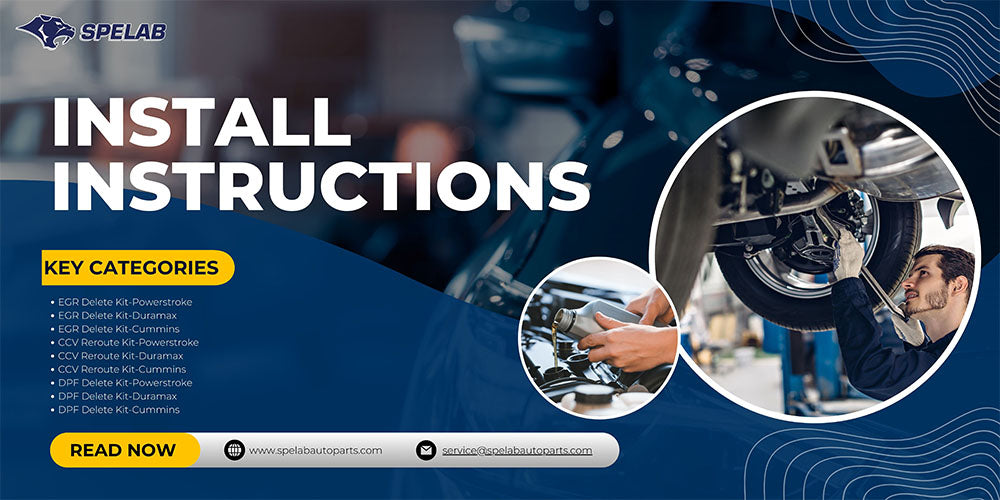
Factory EGR System vs. SPELAB EGR Delete Kit for 2012 6.7L Powerstroke
Considering the upgrade? Here's a side-by-side comparison—now backed with real-world data—to help you understand exactly what changes when switching from the stock EGR system to the SPELAB Powerstroke EGR Delete Kit:
| Feature |
Factory EGR System |
SPELAB EGR Delete Kit |
| Exhaust Gas Recirculation |
Circulates 100–200L/min of hot exhaust back into the intake manifold |
Completely blocked—100% clean intake air |
| Carbon/Soot Buildup |
0.2–0.5mm carbon layer after ~10,000–20,000 miles |
Eliminated—extends intake cleaning interval by 2–3× |
| Coolant Flow |
Routed through EGR cooler; prone to internal restriction and clogging |
Bypassed entirely—improves coolant flow efficiency |
| Coolant Temp Impact |
Often increases coolant temps by 5–15°F due to heat soak |
Drops coolant temp by 8–12°F on average (based on user data) |
| Combustion Efficiency |
Reduced due to dirty intake air and poor airflow |
Up to 10–15% improvement in combustion stability with clean air and tuning |
| Fuel Economy |
Can worsen by 5–10% as carbon builds up |
Gains of 8–20% reported depending on tune, load, and driving style |
| DPF Regeneration Impact |
Increases soot load, triggering more frequent regens |
Reduces DPF regen frequency by 20–30%—longer life, fewer regen cycles |
| Maintenance Cost |
$600–$1200 every 2 years for EGR cooler/valve service or replacement |
One-time install—virtually maintenance-free thereafter |
| Engine Bay Space |
Tight around turbo and intake—difficult for upgrades |
Frees up ~12–15% engine bay space for easier access and mods |
| Heavy Load Stability |
Performance drop during high-temp towing conditions |
Intake temps drop ~14°F; power fade delayed by 30–50% under load (tuned setups) |
| Legal Use |
Emissions-compliant for road use |
For off-road/race use only—users are responsible for local compliance |
Community Insights & Owner Feedback
-
Some owners prefer to block off EGR flow while leaving the cooler in place—ideal for stealth deletes in emission-inspection states.
-
Complete removal of the EGR system opens up space in the engine bay for better access and future performance mods.
-
When paired with an EZ Lynk tuner and GDP tunes, many users report zero error codes, cooler temps, and noticeably smoother driving.
Legal Disclaimer:
This product is designed for off-road/race use only. End users are responsible for ensuring compliance with local emissions laws and regulations.
FAQs
Q1: What is the horsepower of the Ford 6.7L Powerstroke engine?
A1: The 6.7L Powerstroke engine produces up to 475 horsepower and 1,050 lb-ft of torque, depending on the model year.
Q2: How often should I change the oil in my 6.7L Powerstroke?
A2: It is recommended to change the oil every 7,500 miles under normal driving conditions. For severe driving conditions, consider changing it every 5,000 miles.
Q3: What type of oil is best for the 6.7L Powerstroke engine?
A3: The recommended oil type is 10W-30 for normal operating conditions. For extreme conditions, 5W-40 synthetic oil is suggested.
Q4: How do I improve fuel economy on my 6.7L Powerstroke?
A4: To improve fuel economy, maintain regular maintenance, use high-quality fuel, ensure proper tire inflation, and consider adding performance-enhancing aftermarket parts like an EGR delete kit.
Q5: What are common issues with the Ford 6.7L Powerstroke engine?
A5: Common issues include turbocharger failures, EGR system problems, and high-pressure fuel pump failures. Regular maintenance can help mitigate these issues.
Q6: Can I use biodiesel in my 6.7L Powerstroke engine?
A6: Yes, the 6.7L Powerstroke is compatible with up to B20 biodiesel (20% biodiesel, 80% petroleum diesel).
Q7: How do I reset the oil change light on my 6.7L Powerstroke?
A7: To reset the oil change light, turn the ignition on without starting the engine, press the gas and brake pedals simultaneously for about 25 seconds until the oil change light resets.
Q8: What is the towing capacity of the Ford 6.7L Powerstroke?
A8: The towing capacity can range up to 37,000 pounds when properly equipped, depending on the model year and configuration.
Q9: How do I perform a regen on my 6.7L Powerstroke?
A9: A regen (regeneration) cycle is typically automatic. If a manual regen is needed, it can be initiated via the vehicle’s dashboard settings or using a scan tool for forced regeneration.
Q10: How often should the fuel filters be changed on a 6.7L Powerstroke?
A10: It is recommended to change the fuel filters every 15,000 miles or once a year, whichever comes first.
Q11: Can I delete the EGR but keep the cooler?
A11: Yes, many users do this to reduce labor and keep the engine bay looking stock. However, full performance and cooling gains come from removing the cooler entirely.
Q12: What happens if I don’t install the bypass plate?
A12: You risk creating pressure or coolant circulation issues. The bypass plate is essential for sealing the system after EGR removal.
Q13: Will my engine braking (exhaust brake) still work?
A13: Yes. With proper tuning, functions like the exhaust brake and manual gear select will remain active. The 75HP tow tune is a popular, reliable choice.

PLEASE NOTE!
2011-2014 & 2017-2019 6.7L Powerstroke EGR Delete Kit Instruction
2015-2016 6.7L Powerstroke EGR Delete Kit Instruction
2020+ 6.7L Powerstroke EGR Delete Kit Instruction














































































